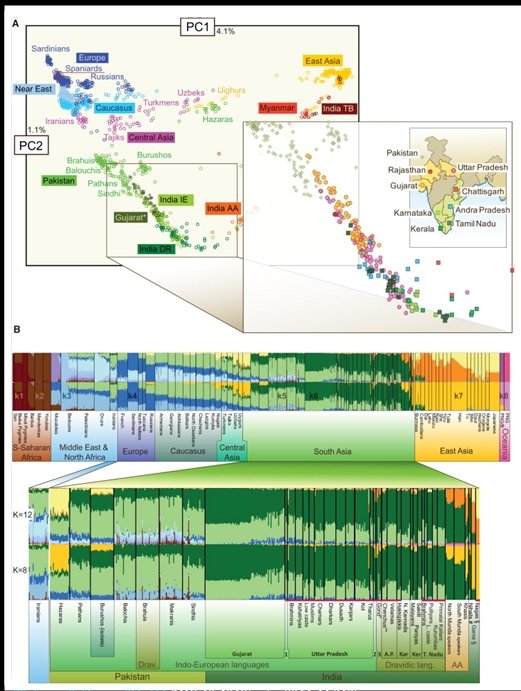Widely believed theory of Indo-Aryan invasion, often used to explain early settlements in the Indian subcontinent is a myth, a new study by Indian geneticists says.
The origin of genetic diversity found in South Asia is much older than 3,500 years when the Indo-Aryans were supposed to have migrated to India, a new study led by scientists from the Centre for Cellular and Molecular Biology (CCMB), Hyderabad, says. The study appeared in American Journal of Human Genetics on Friday.
The theory of Indo-Aryan migration was proposed in mid-19th century by German linguist and Sanskrit scholar Max Muller.
He had suggested that 3,500 years ago, a dramatic migration of Indo-European speakers from Central Asia played a key role in shaping contemporary South Asian populations and this was responsible for introduction of the Indo-European language family and the caste system in India.
"Our study clearly shows that there was no genetic influx 3,500 years ago," said Dr Kumarasamy Thangaraj of CCMB, who led the research team, which included scientists from the University of Tartu, Estonia, Chettinad Academy of Research and Education, Chennai and Banaras Hindu University.
"It is high time we re-write India's prehistory based on scientific evidence," said Dr Lalji Singh, former director of CCMB. "There is no genetic evidence that Indo-Aryans invaded or migrated to India or even something such as Aryans existed". Singh, vice-chancellor of BHU, is a coauthor.
Researchers analysed some six lakh bits of genetic information in the form of SNPs drawn from DNA of over 1,300 individuals from 112 populations including 30 ethnic groups in India.
The comparison of this data with genetic data of other populations showed that South Asia harbours two major ancestry components. One is spread in populations of South and West Asia, Middle East, Near East and the Caucasus. The second component is more restricted to South Asia and accounts for more than 50 per cent of the ancestry in Indian populations.
"Both the ancestry components that dominate genetic variation in South Asia demonstrate much greater diversity than those that predominate West Eurasia. This is indicative of a more ancient demographic history and a higher long-term effective population size underlying South Asian genome variation compared to that of West Eurasia," researchers said.
"The genetic component which spread beyond India is significantly higher in India than in any other part of world. This implies that this genetic component originated in India and then spread to West Asia and Caucasus," said Gyaneshwar Chaube of University of Tartu, Estonia.
If any migration from Central Asia to South Asia took place, the study says, it should have introduced apparent signals of East Asian ancestry into India. "Because this ancestry component is absent from the region, we have to conclude that if such an event indeed took place, it occurred before the East Asian ancestry component reached central Asia," it said.
 |
| Figure 2Genome-Wide Structure of the Studied Populations Revealed by 530,000 SNPs Copyright © 2011 The American Society of Human Genetics All rights reserved. The American Journal of Human Genetics, Volume 89, Issue 6, 731-744, 9 December 2011 doi:10.1016/j.ajhg.2011.11.010 |

